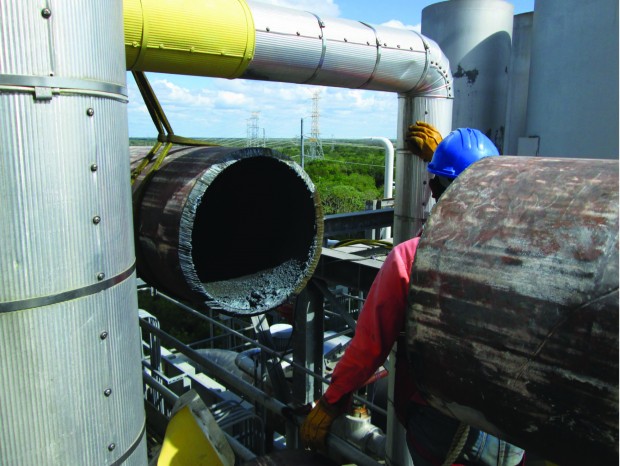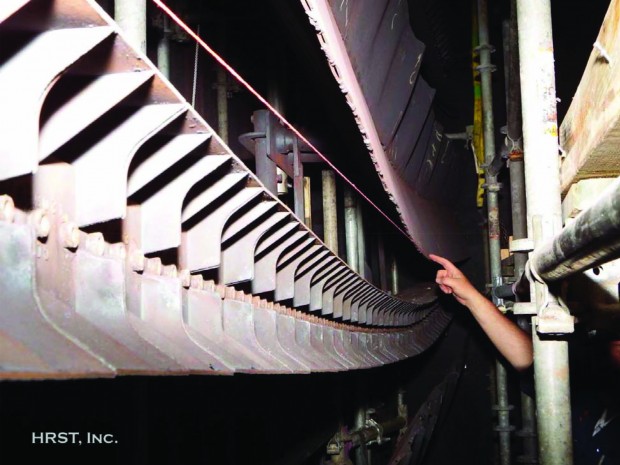
HRSG steam pipe leaks downstream of the attemperators.
HRSG MAINTENANCE SHOULD BE COORDINATED WITH SCHEDULED OUTAGE WINDOWS FOR GAS TURBINES AND STEAM TURBINES
When we are talking about any kind of vehicle or a combined cycle plant, the crucial point to successful operation of any power equipment is an effective maintenance plan. This aids maintenance managers strategize ahead, minimize unforeseen failures, and accommodate limitations forced by financial and outage resources. Cost, outage time and contractor manpower are some of the factors to be considered.
Each plant may select a different maintenance plan. Some may want to max up the synchronization of Heat Recovery Steam Turbine (HRSG) maintenance with the overhaul of the gas turbine (GT) or steam turbine (ST) to exploit outage time. Others may struggle to level their costs by fluctuating as much HRSG maintenance to the years before or after the GT and ST outage window to avoid large peaks in annual maintenance costs.
This is important when you take into consideration the fact that hundreds of F-class or larger HRSGs were commissioned in the 2000-to-2005 time period. Therefore many are about half-way through their original specified design life.

Figure 1: Replacement of attemperator piping must be planned well in advance
Component redesigns
Factor in the severe increase in plants conducting HRSG cycling, and many of these HRSGs can presume to need major component redesigns and replacements in the next ten years. Consequently combined cycle power plants will need more attention and coordination over the next few years than they did in the earlier ten to identify and plan for the possibility of HRSG capital projects.
There are many large HRSG projects that managers of combined cycle plants should evaluate thoroughly and include in any predictions being done as part of GT and ST maintenance planning. Attemperator piping failure and replacement is a vital area to take into account (Figure 1).
Problems in this part of the HRSG are frequently caused by a desuperheater overspray and short distance from a feedwater inlet to downstream elbow where liquid water is not able to completely vaporize before it comes into contact with a pipe and extinguishes it.
Desuperheater overspray is an operational problem and can happen when steam is sprayed to saturation or within 50°F of saturation temperature. But even well designed and correctly operated desuperheater arrangements can experience a pipe failure.
All it takes is one leaky feedwater valve or faulty desuperheater probe. Some gas turbine upgrades from OEMs that allow lower loads and changes to the turbine exhaust conditions can aggravate this problem. Issues with attemperator piping are no small matter as redesigned piping systems can take 40 or more weeks to design and supply. Their assessment involves visual inspection of superheaters and reheaters for bowing, check of performance data to look for indicators of overspray, and quality non-destructive evaluation (NDE) of piping locations at risk to stress and cracking.
Another common area of combined cycle maintenance is duct burner replacement. This occurs due to burner failure from cracking initiated at the nozzles or from overheated, warped and burnt away components. Detection requires visual inspection, both off-line and on-line, and review of maintenance history of comparable designs (Pictures 3 & 4 in the slideshow).
Poor burner flame patterns or burner element failures may force a derate of a steam turbine generator from its maximum full-load, full-duct firing power output. A burner derate on one HRSG can affect not only that HRSG, it can also derate adjacent HRSGs if they are part of a 2×1, 3×1 or 4×1 steam turbine configuration within a combined cycle plant.

Figure 2: A badly bowed duct burner inside HRSG